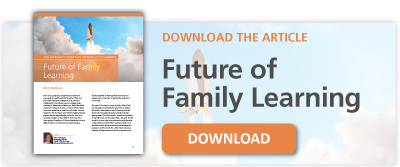Family Enterprise Planning: How to Engage the Next Generation

Beyond the Family Business
A business-owning family with intertwined holdings and joint assets across generations must invest in planning to ensure continued success as a family and as a business. It is by virtue of having a big picture plan, or even just expressing the need to have a plan, that a family becomes an “enterprise family.”
The underlying reason for a business-owning family to become an enterprise family comes with the answer to the question “why are we staying together?” If the answer is only financial, the enterprise doesn’t last. Successful family enterprise planning involves developing a vision that builds upon defining common values and goals among family members.
It starts with the idea of sharing. Sharing is complicated because each generation has to build upon a common vision and learn how to make joint decisions and share both control and risk. To master this complexity and succeed together, they must be able to engage, respect and trust each other long-term.
There are families with branches all over the world that are able to function successfully as an enterprise family, and the primary success factor they share in common is the engagement of their rising generation(s) through education, communication, and collaboration.
Education
As the young people in a family become adults, it’s important for them to be informed. The responsibilities that come with being part of a family enterprise are not topics that a young family member can learn on their own in higher education or from a book. So, having a learning process that starts at an age-appropriate time for each family member is crucial.
This learning process should cover a wide-range of topics including family history, family values, and education related to finances, family foundations, businesses, and real-estate. It can start at age 15 or 16 with the “101” level and go deeper as the family member expresses interest in learning more.
Some families integrate a learning exercise into each family member’s “coming of age” birthday party. The family member will start a community service project at around age 15 and, when they turn 16, will present what they learned and how it has impacted their pathway into adulthood to the rest of the family. These lessons help them internalize their family’s values as they move out of their own family/parental branch and become part of the larger family enterprise.
Another fantastic way of giving younger family members a hands-on education is having them get involved with the family foundation. They can learn about the grants that the family makes and their impact and results. They might research areas that are of interest to them and write proposals for family consideration that express the type of philanthropic endeavors that they are personally interested in.
As each person in the next generation of the family enterprise has these educational experiences, they should share their learnings with the rest of the family.
Communication
After the founder of a family business (G1), future generations are made up of siblings and cousins who may have had a variety of experiences growing up. So, their ability to communicate with one another is not necessarily natural—it needs to be developed. It’s important to have planned, thoughtful, time devoted to communication between members of the rising generation.
They should start with getting to know each other as adults (or soon-to-be adults) at family meetings, in a family council environment, or in larger families, at a family assembly. Even around the kitchen table at holidays is a good time to encourage quality time between cousins. Face-to-face time should be scheduled in quarterly or annual family meetings, or whatever time period works for each family.
Beyond meetings, families also develop online forums for communication. This might be a place where the family can store family history statements or other important family documents. Having a place where family members can go and read those documents at their leisure, helps the next generation have a touchpoint to think about the family enterprise throughout the year.
Other families, especially as you get into the third-generation-and-beyond stages, will develop newsletters so that everybody can be updated and kept aware of what the rest of the family is doing.
It’s hard to do business with people who are strangers, so enterprise families must strive to maintain frequent and consistent communication between branches.
Collaboration
Once the next generation of family members is comfortable communicating with one another, collaboration may begin. Now, they can develop more formal structures and strategies for the future. They can answer the following questions together: What are our common values? What are our common interests? What are our goals for the family assets?
Perhaps they don’t share all of their goals, interests, or values, but they can build upon those that they do share. They’ll be able to reach consensus and make decisions. At times, they’ll have to agree to disagree. Knowing how to do that collaboratively is how families go about planning for the future.
Planning for success in the family through the generations must address the key components of education, communication and collaboration with designated time and a thoughtful approach. Successful planning across the enterprise family may take almost as much, if not more time, than you gave to building your business and the family wealth.
---
